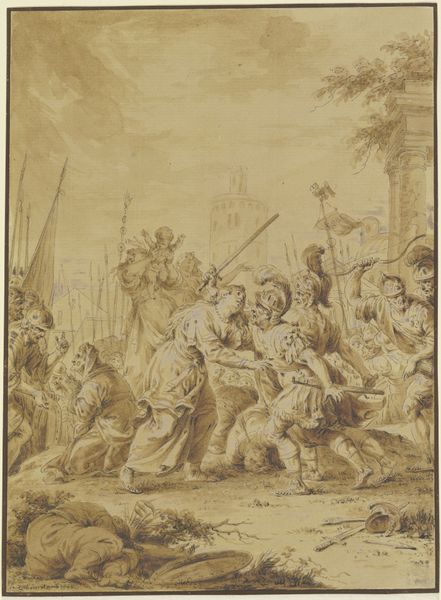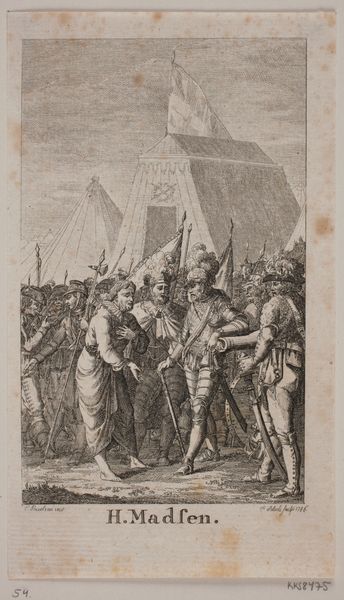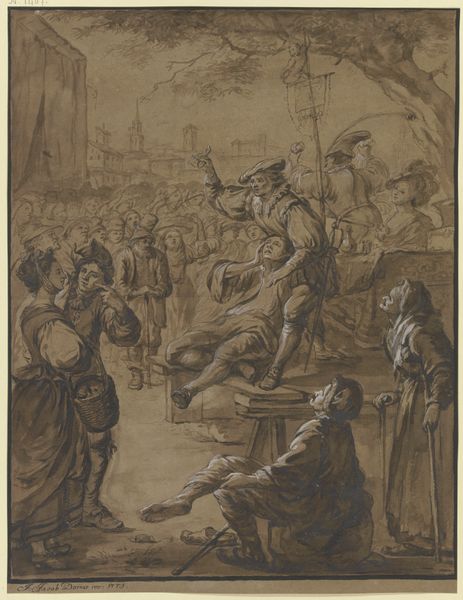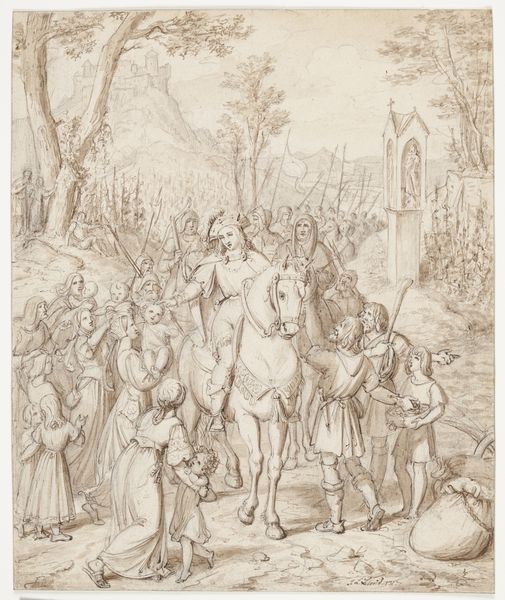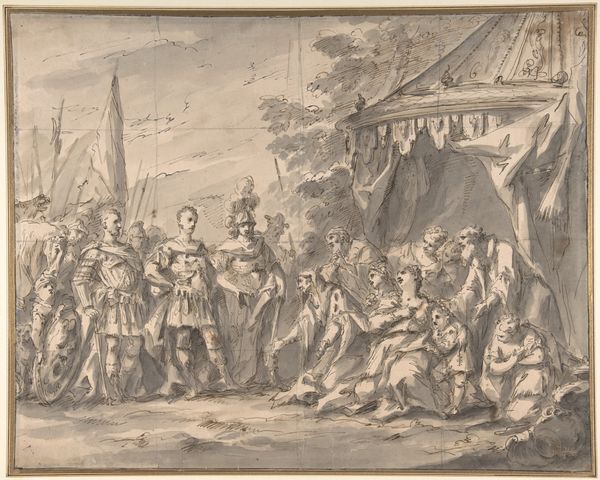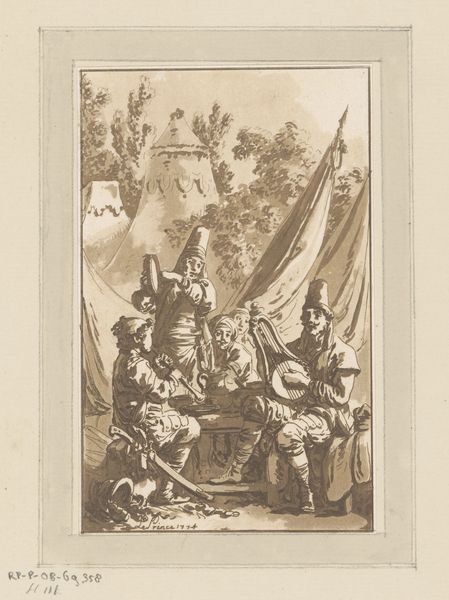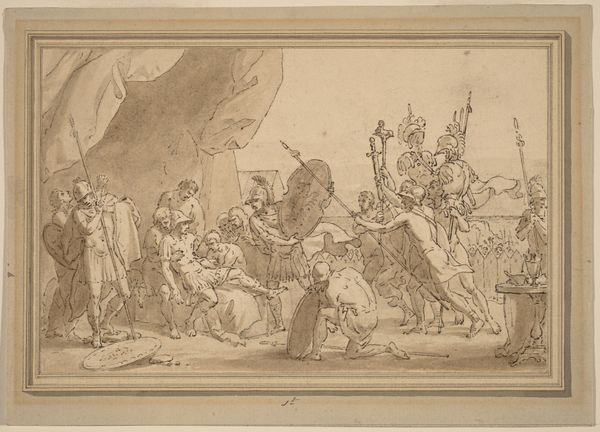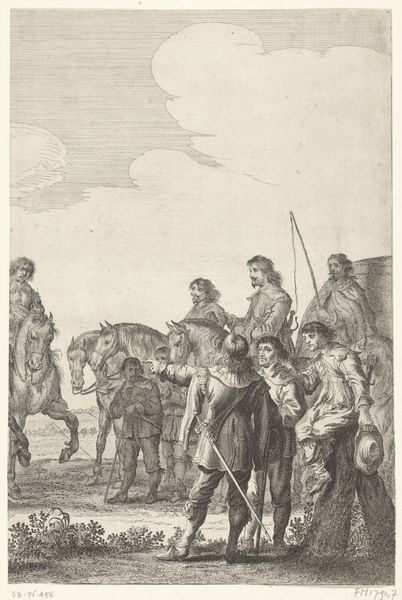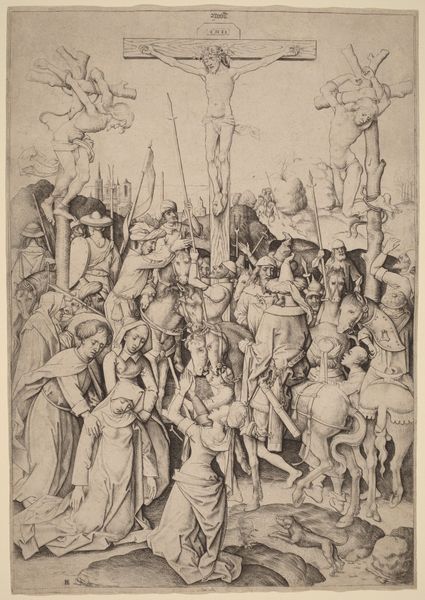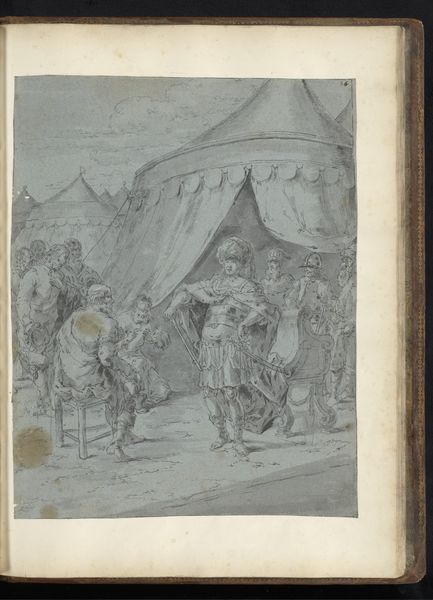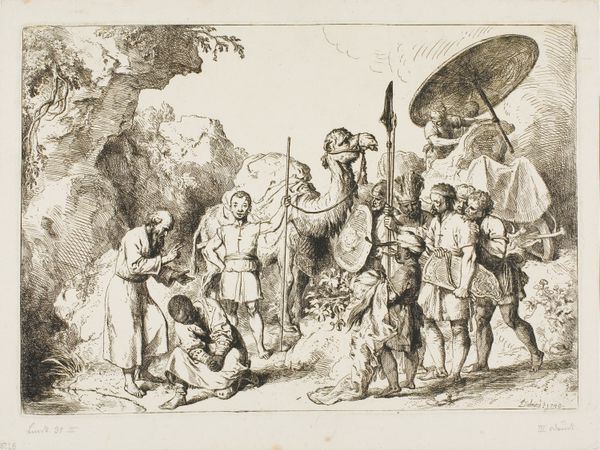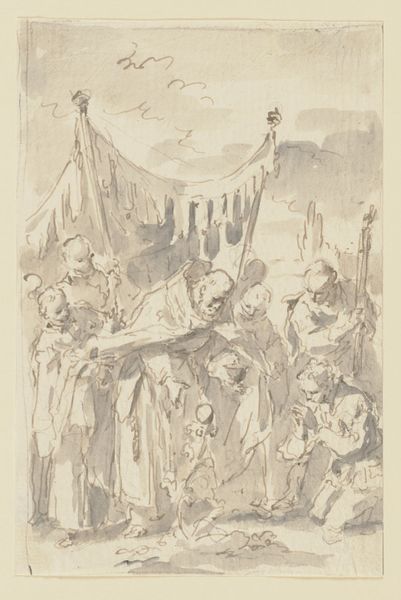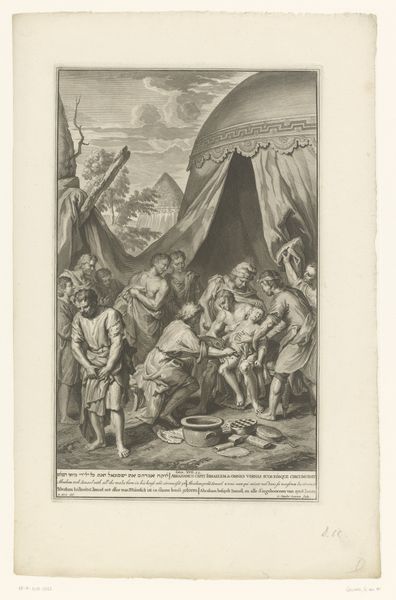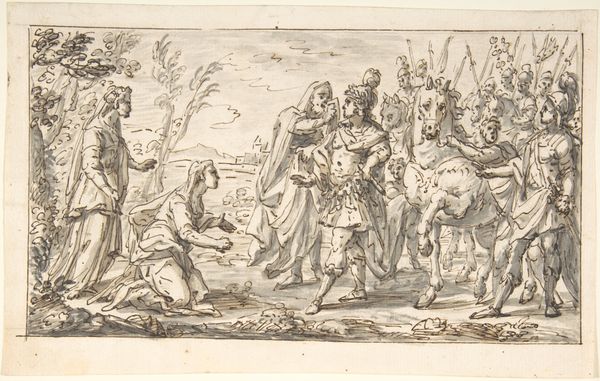
Copyright: Public Domain
Curator: Januarius Zick created this ink drawing entitled “The Continence of Scipio” in 1778. It's part of the Städel Museum collection. What's grabbing your attention? Editor: The sepia tones are washing over me like a memory. The way everyone's positioned… it’s heavy with drama, isn’t it? A real 'moment' being depicted. A stage almost, but rendered in gentle washes. Curator: Absolutely, the staged composition and the carefully delineated gestures do point to the influence of Baroque theatre. Considering the historical context, the piece speaks to the enlightenment ideals prevalent at the time. This work presents the Roman general Scipio Africanus, who, after capturing a young woman, resisted the impulse to claim her for himself and instead returned her to her betrothed along with her dowry. It's a moment of perceived moral excellence. Editor: Oh, the big man resists temptation... well that certainly echoes today, doesn't it? All this performance of virtue… But what if the woman had wanted a different life? Does anyone consider her desires, her autonomy? Curator: The narrative is complex when viewed through contemporary intersectional feminist lenses. While on the surface, Scipio appears to be acting virtuously, this act perpetuates patriarchal systems where women are treated as property. Scipio’s continence, paradoxically, reinforces his power and status by controlling female agency. Editor: Exactly. What price is she paying for his "goodness"? Also, I wonder if that water pitcher on the ground has anything to do with that moral virtue? All clean and ready, post resisting? I'm joking... slightly. But the scene feels almost oppressively righteous. Curator: The sparseness of color is interesting too. There is a stark quality to this work, reflecting perhaps the austere nature of the moral lesson itself. How does the sparseness affect your read of it? Editor: It mutes it, definitely. All that brown. Feels almost ancient, as if morality itself is… dusty. Perhaps it would have felt completely different in bright, garish colours, less ‘reverent’ more… immediate, passionate! Maybe Januarius Zick knew exactly what he was doing to frame this 'heroic' deed with faded inks. I will now need to dwell on the gaze. Thank you for your thoughtful interpretation. Curator: Thank you. Exploring the implications of such a "virtuous" depiction reveals so much about the relationship between power, gender, and moral storytelling through art history.
Comments
No comments
Be the first to comment and join the conversation on the ultimate creative platform.
